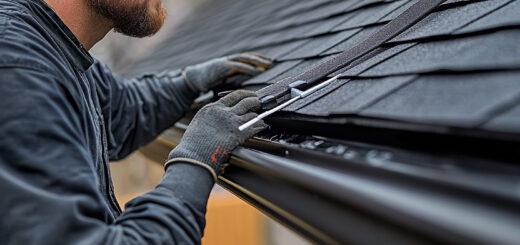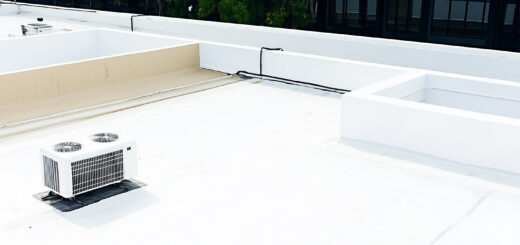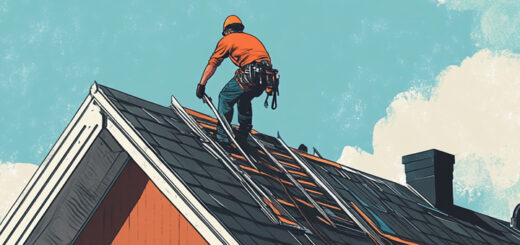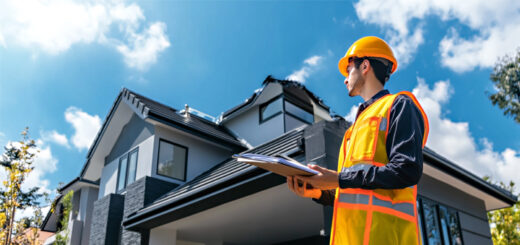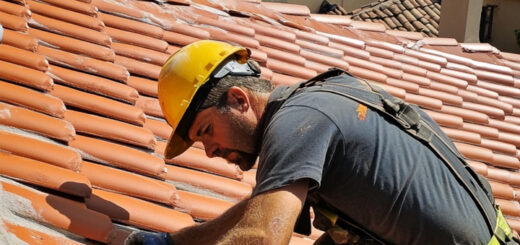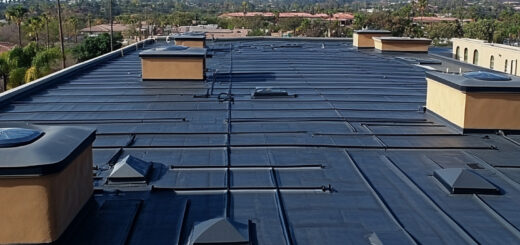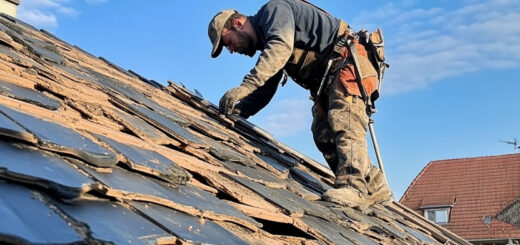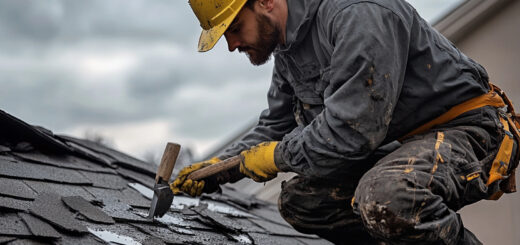FAQs About a New Roof
When embarking on the journey of installing a new roof, understanding the frequently asked questions (FAQs) about roof replacement is crucial. These roofing questions can provide valuable insights and help you make informed decisions throughout the process. A new roof installation guide often includes essential information on materials, costs, timelines, and maintenance tips—key aspects that every homeowner should be familiar with before starting the project.
Roofing basics cover everything from choosing the right type of shingles to understanding warranties and potential weather impacts on your chosen materials. By familiarizing yourself with these FAQs about roof replacement, you can ensure that you are prepared for any challenges that may arise during installation. This knowledge not only empowers you to ask the right questions to your contractor but also helps in planning effectively for one of your home’s most significant investments.
How to Determine When You Need a New Roof
Determining when you need a new roof is crucial for maintaining the safety and integrity of your home. Understanding the signs that indicate it’s time for a replacement can save you from costly repairs and potential damage. One of the first steps in assessing your roof’s condition is to conduct regular inspections. During these inspections, look for common signs that suggest it might be time for a new roof.
Firstly, consider the lifespan of your roof. Most roofs are designed to last between 20 to 30 years, depending on materials used and environmental conditions. If your roof is approaching or has exceeded this age range, it may be wise to start planning for a replacement.
Next, examine shingles closely during your inspection. Signs you need a new roof often include curled, cracked, or missing shingles. These issues can lead to leaks and further structural damage if not addressed promptly.
Another key indicator is the presence of granules in gutters or downspouts. As shingles age, they lose granules which end up in gutter systems—this is a clear sign that your roofing material is deteriorating.
Additionally, check inside your attic for daylight coming through the boards or signs of water damage on ceilings and walls. These are strong indicators that moisture has penetrated through compromised areas of your roofing system.
By keeping these roof inspection tips in mind and being proactive about maintenance checks, you’ll be better equipped to determine when it’s time to replace your roof before minor problems escalate into major headaches.
The Different Types of Roofing Materials Explained
When it comes to selecting the best roofing material for your home, understanding the different types available is crucial. Each material offers unique benefits and drawbacks, which can significantly impact your home’s durability, energy efficiency, and aesthetic appeal.
One of the most common types of roofing materials is asphalt shingles. Known for their affordability and ease of installation, asphalt shingles are a popular choice among homeowners. They come in a variety of colors and styles, providing flexibility in design. However, they may not be as durable as other options and typically have a shorter lifespan.
In contrast, metal roofs are gaining popularity due to their longevity and resilience. While initially more expensive than asphalt shingles, metal roofs can last up to 50 years or more with proper maintenance. They are also highly resistant to extreme weather conditions and fire. Additionally, metal roofs reflect solar radiant heat effectively, which can help reduce cooling costs during hot months.
For those seeking eco-friendly roofing options, materials such as recycled shingles or green roofs might be worth considering. Recycled shingles are often made from waste products like rubber or plastic and offer durability while reducing landfill waste. Green roofs involve planting vegetation over a waterproof membrane on your roof’s surface; they provide excellent insulation properties and contribute positively to the environment by improving air quality.
Ultimately, choosing the best roofing material for your home depends on various factors including climate considerations, budget constraints, aesthetic preferences, and long-term goals regarding sustainability or energy efficiency. Consulting with a professional roofer can provide further insights tailored specifically to your needs.
The Cost Factors Involved in Getting a New Roof
When considering a new roof, understanding the cost factors involved is crucial for effective budgeting. A roof replacement cost estimate can vary significantly based on several key elements. One primary factor affecting roofing costs is the material chosen. Options range from asphalt shingles, which are generally more affordable, to high-end materials like slate or metal, which can be considerably more expensive.
Labor costs also play a significant role in the overall price of a new roof. These costs can fluctuate depending on the complexity of the job and local labor rates. Additionally, the size and pitch of your roof will impact both material and labor expenses; larger or steeper roofs typically require more time and resources to complete.
Another consideration is whether any existing damage needs repair before installation begins. Issues like water damage or structural problems must be addressed to ensure your new roof’s longevity, potentially increasing costs.
To budget effectively for a new roof, it’s essential to obtain multiple quotes from reputable contractors who can provide detailed breakdowns of their estimates. Exploring affordable roofing solutions might involve weighing different materials’ long-term benefits against their initial cost or considering energy-efficient options that could save money over time through reduced utility bills.
By thoroughly understanding these factors affecting roofing costs, homeowners can make informed decisions that align with their financial capabilities while ensuring they invest in a durable and reliable roofing solution.
Understanding the Roof Installation Process: What to Expect?
When embarking on a roof installation project, understanding the process can alleviate concerns and set clear expectations. The roof installation steps typically begin with a thorough inspection and assessment of your current roofing system. This ensures that any underlying issues are identified and addressed before the new roof is installed.
Once the initial evaluation is complete, the next step involves selecting materials that suit both your aesthetic preferences and functional needs. From asphalt shingles to metal roofing, each material offers distinct benefits and requires specific handling during installation.
The timeline for installing a new roof can vary based on several factors, including the size of your home, weather conditions, and the type of materials chosen. Generally, homeowners can expect this process to take anywhere from a few days to over a week. It’s important to discuss this timeline with your contractor to plan accordingly.
During roof replacement, old roofing materials are carefully removed to prevent damage to underlying structures. This phase often includes inspecting and repairing any damaged decking or framework before proceeding with the new installation. Once prepared, contractors lay down underlayment—a protective barrier against moisture—followed by the selected roofing material.
Throughout this process, professional installers ensure that all components are securely fastened and properly aligned for optimal performance and longevity. By understanding these key stages in roof installation, homeowners can feel more confident in their investment while ensuring their property remains protected for years to come.
The Importance of Choosing the Right Roofing Contractor
Choosing the right roofing contractor is crucial to ensuring the longevity and quality of your roof. With so many options available, it can be overwhelming to decide who to trust with such a significant investment. To make an informed decision, it’s essential to know how to choose a roofer that meets your needs.
Start by researching reputable roofing contractors near you. Look for companies with strong customer reviews and high ratings on trusted platforms. Once you’ve narrowed down your list, reach out to potential contractors and ask key questions that will help assess their expertise and reliability.
Some important questions to ask your roofer include: Are you licensed and insured? Can you provide references from previous clients? What warranties do you offer on materials and workmanship? How do you handle unexpected issues or changes during the project?
By thoroughly evaluating potential contractors through these steps, you’ll be better equipped to find a professional who not only delivers quality work but also provides peace of mind throughout the roofing process. Remember, taking the time now to choose wisely can save you from headaches—and costly repairs—down the road.
Caring for Your New Roof: Maintenance Tips and Tricks
Caring for your new roof is essential to ensure its longevity and protect your home from the elements. By following some key roof maintenance tips, you can extend the life of your new roof and avoid costly repairs down the line. One of the most effective ways to maintain your roof is through regular inspections. It’s important to check for any signs of damage, such as missing shingles or leaks, especially after severe weather conditions.
Seasonal care for roofs is another crucial aspect of maintenance. In the fall, make sure to clear away leaves and debris from gutters and downspouts to prevent water buildup that can lead to damage. During winter, watch out for ice dams that can form at the edges of your roof; these can cause water to back up under shingles and lead to leaks. In spring and summer, inspect for any growth of moss or algae which can degrade roofing materials over time.
Additionally, trimming overhanging branches helps prevent potential damage from falling limbs during storms and reduces shade that encourages moss growth. Scheduling professional inspections every few years ensures that minor issues are caught early before they become major problems.
By implementing these strategies into your routine maintenance plan, you’ll be taking proactive steps towards extending the life of your new roof while safeguarding one of your home’s most important investments.
Making Informed Decisions About Your New Roof Investment
Investing in a new roof is a significant decision that requires careful consideration and planning. As homeowners, understanding the various factors involved can help you make informed choices that align with your needs and budget. Begin by evaluating the different types of roofing materials available, each offering unique benefits in terms of durability, aesthetics, and energy efficiency. Consider the climate in your area, as it plays a crucial role in determining the most suitable material for long-term performance.
Additionally, it’s important to factor in the cost of installation and maintenance over time. While some materials may have a higher upfront cost, they could offer savings through longevity and reduced maintenance requirements. Engaging with reputable roofing contractors is another critical step; their expertise can guide you through selecting quality materials and ensuring proper installation.
Lastly, don’t overlook potential warranties or guarantees offered by manufacturers or contractors—these can provide peace of mind by protecting your investment against unforeseen issues. By taking these considerations into account, you can confidently move forward with your roofing project knowing you’ve made a well-informed decision that enhances both the value and comfort of your home.

